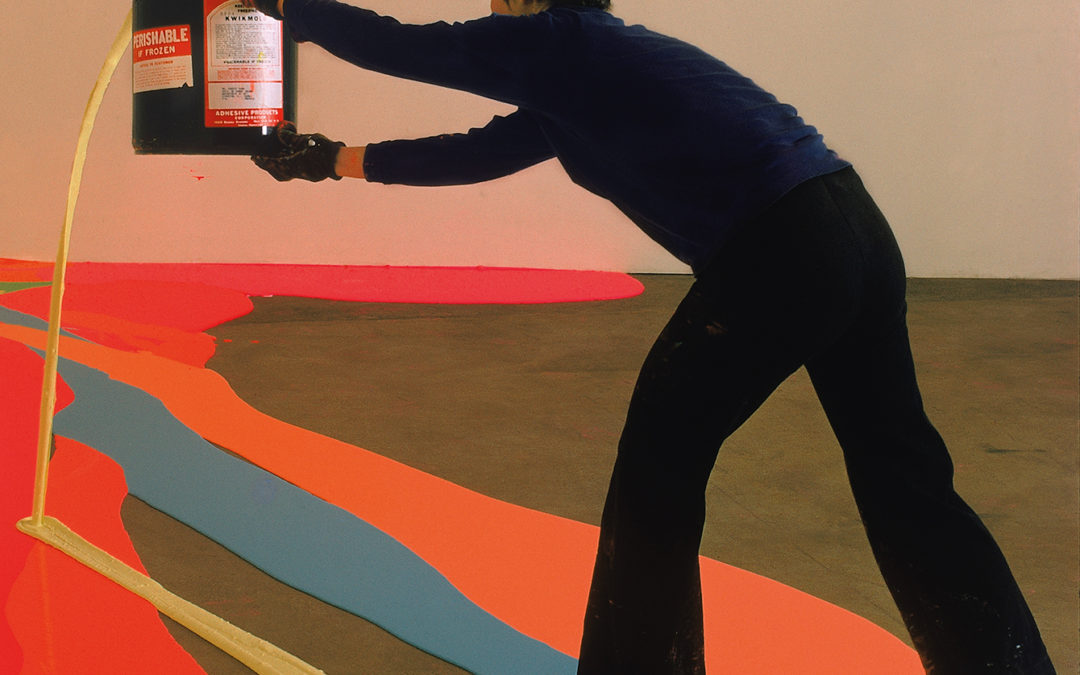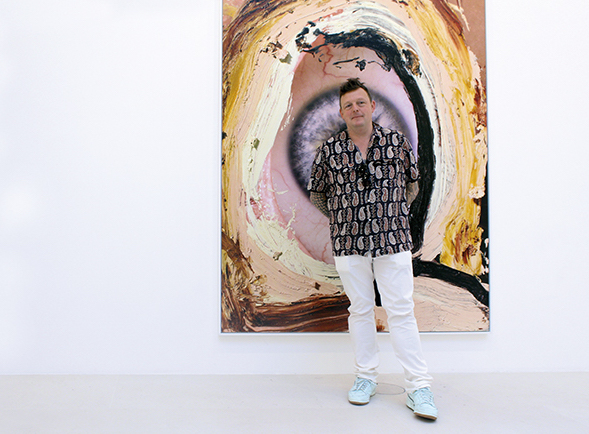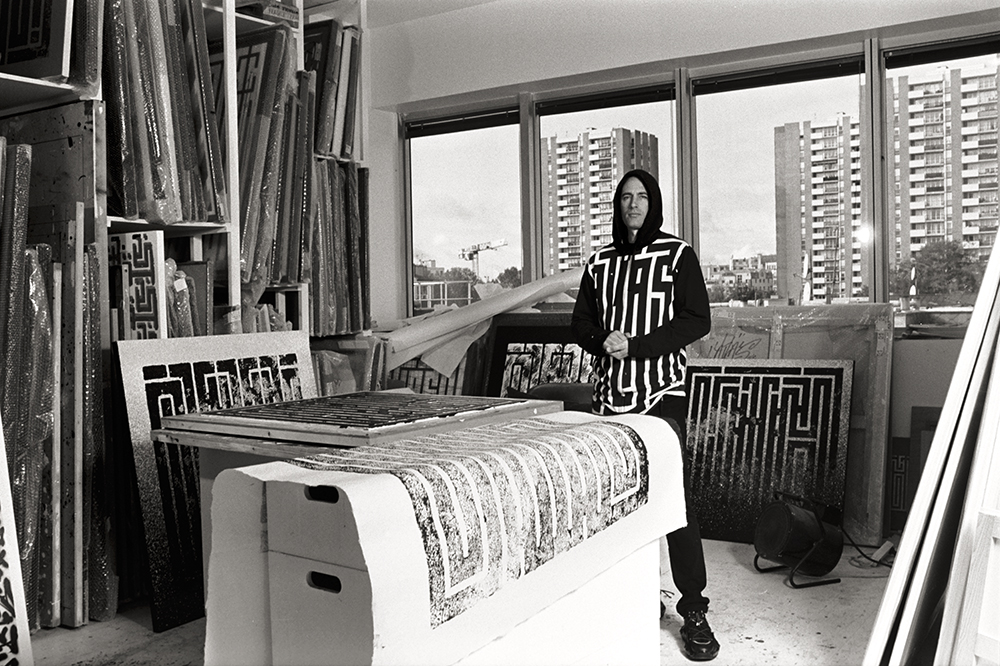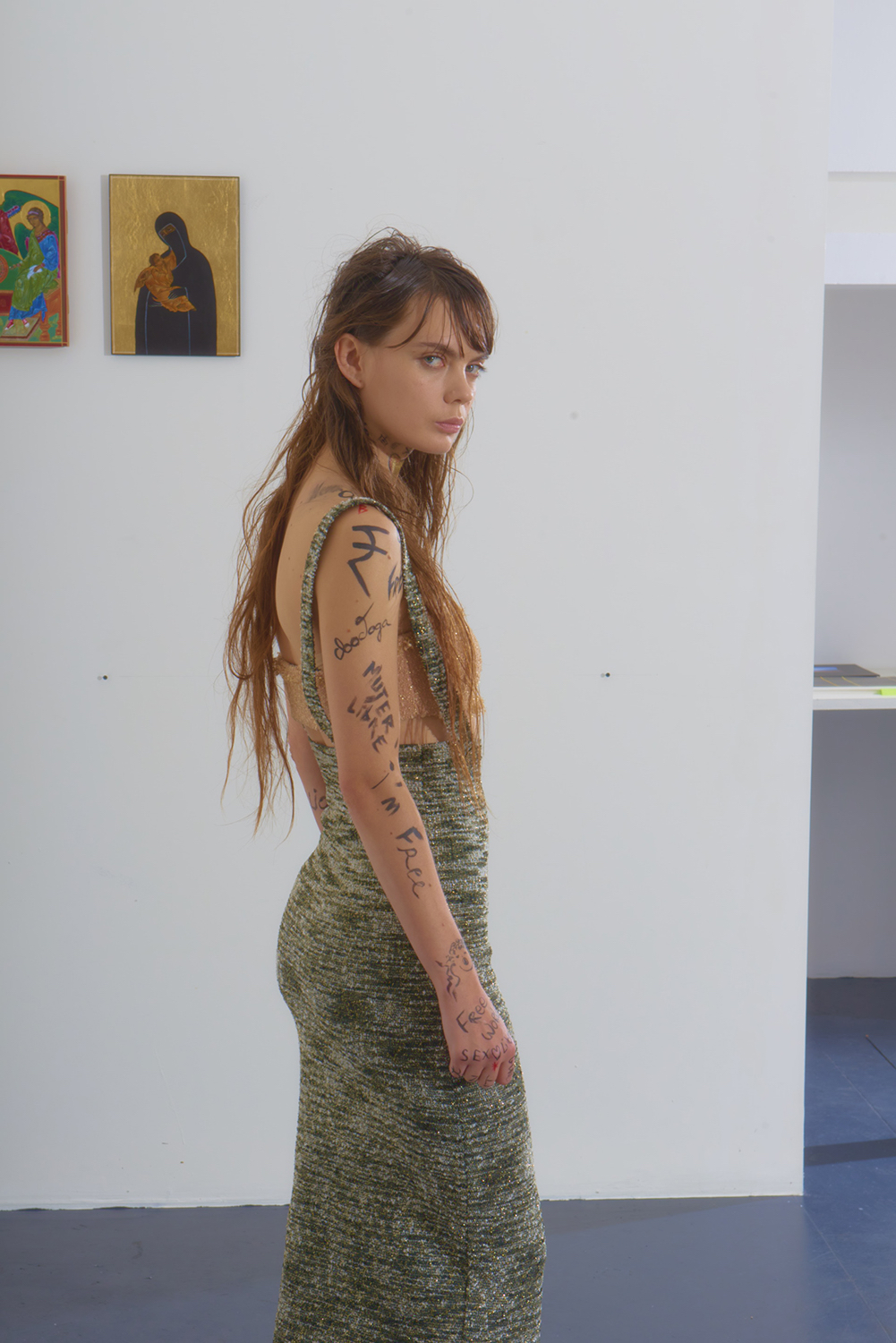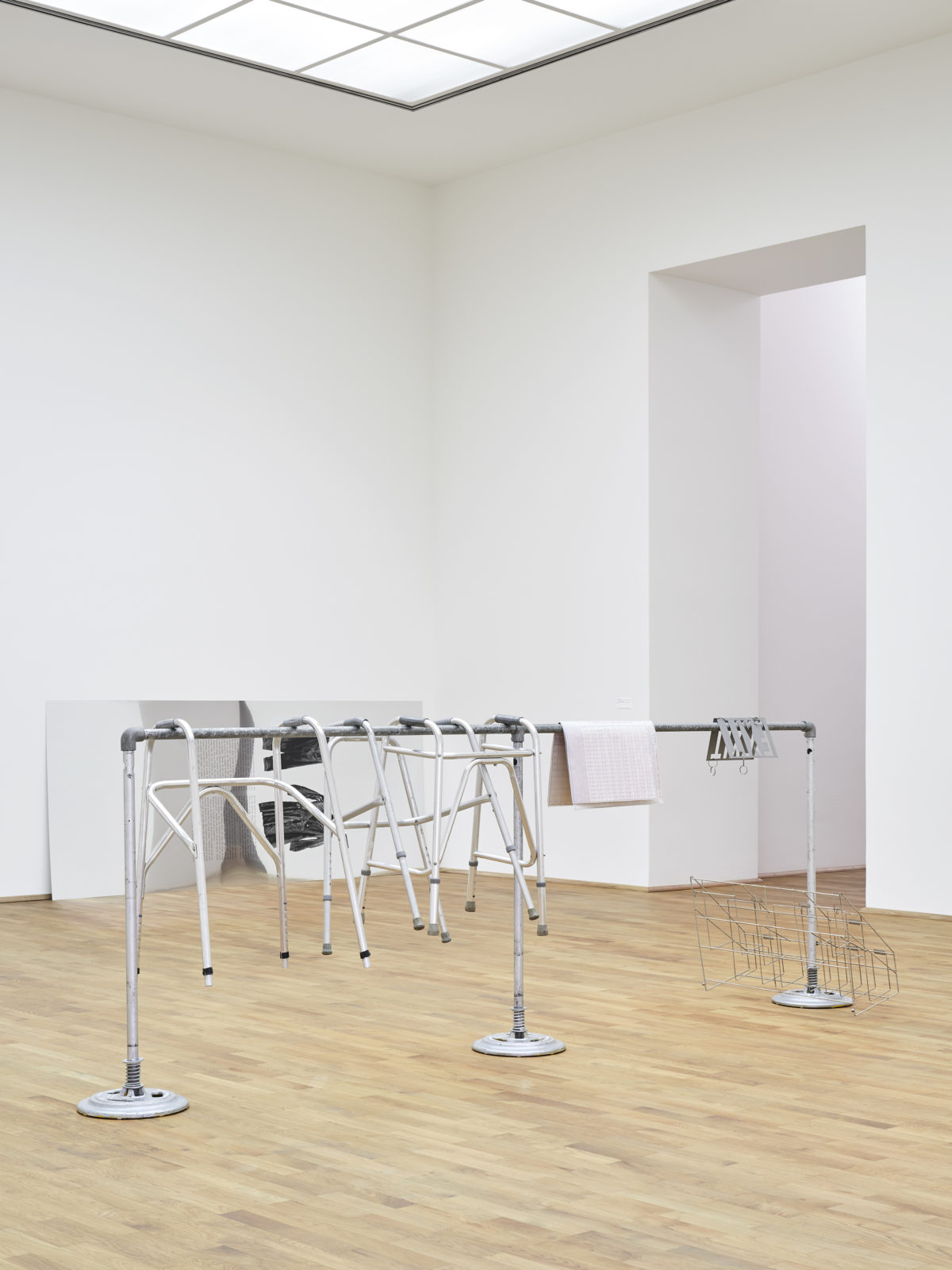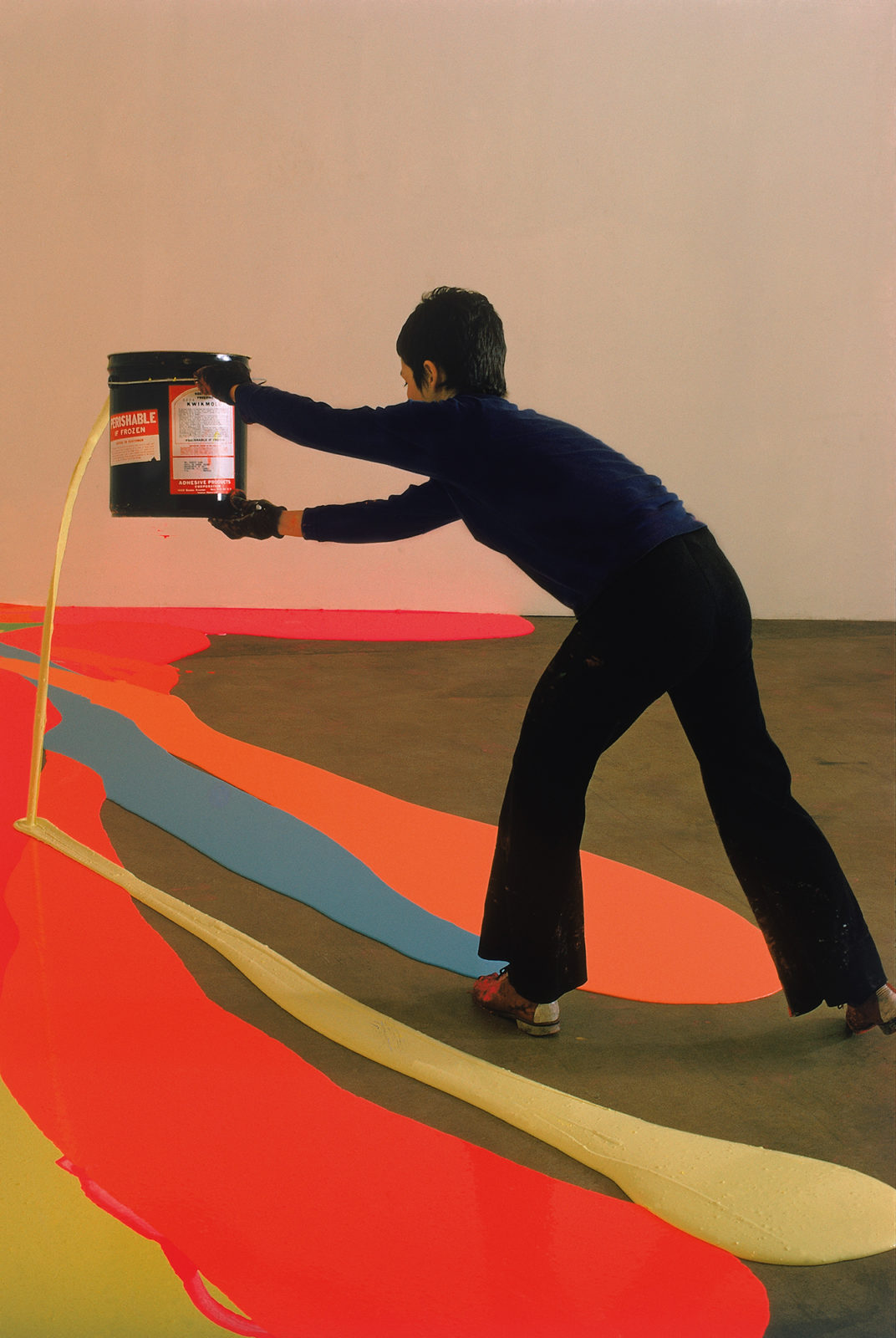
A MEETING BETWEEN LYNDA BENGLIS & ARMELLE LETURCQ
By Armelle Leturcq
On the occasion of its reopening, the Pompidou center proposes an exhibition honoring 100 women artists. The occasion to discover our interview with the artist Lynda Benglis from our Crash#83.
Though relatively unknown to European audiences, Lynda Benglis has stood as a major artist across the pond since the mid-1960s. In her work, she highlights the artistic process by creating “frozen gestures” and performative works, such as the latex paint she once poured directly onto the gallery floor. Supportive of the cause of women, within an environment that limits their potential or places them in the shadow of men, Benglis cut against the grain of the feminist movement by flaunting a strong and sexualized image of her body. Her radical and innovative works provoked critics and broke with conventions, always with a focus on authenticity and redefining the contours of art.
Do you remember how and when you decided to become an artist?
Yes, I moved to New York when I was twenty-two and said I would give myself till I was twenty-seven to be disciplined as an artist. I wanted to be disciplined and had studied painting, ceramics, and sculpture at Tulane. Then I went to New York and continued there. I took logic in college, so I started thinking about what ideas could promote the language I wanted to see in art. After learning about what was happening in the art world – at the galleries and at the museums – I rapidly understood that art was about ideas, as well as the making and the discipline.
Did you come from an artistic family or background?
My mother did some art before she was married. She was very talented in drawing and did oil paintings. But she had two children, and I guess she had a nervous breakdown after the second. My father sent her to the hospital in Mississippi, and the Catholic nuns there insisted that she draw. At that time she felt forced and didn’t feel like doing art, though I remember that she drew portraits of me and my sister. But it ended there, because she started having more children. I saw a clay bust she did of herself, which had an oddly elongated neck. Later I realized she had had a goiter operation. On an emotional level, that may have damaged her idea about getting into art, as well as just having such a large family with five children. When I was young I knew I had an interest in art, and in seventh grade my classmates called me Rembrandt the Second. And I didn’t even know who Rembrandt was at the time! You can imagine going to school in Louisiana and not being as museum educated as you might be in Europe, but I knew I wanted to go to a school with a strong arts program, which was at Tulane in New Orleans.
Were your parents happy you studied art or did it come as a surprise?
I think my father asked me why I wanted to do art, because he didn’t think that artists could be successful or make money. But then I got my name in the local newspaper and he thought it was okay. I did have some success at school in New Orleans, and right away I showed talent. We didn’t have much art in school. I tended to draw and make copies of other drawings or ideas.
Did you go to New York to work in art immediately after school?
I was invited to the Yale Norfolk summer school, which gave me a taste of New York. I had been to the area before, and when I was eleven I went to Europe with my grandmother. I was always interested in sculpture. I was impressed with the sculpture of the young women at the Acropolis. While I was there I also saw a little rock that I wanted, but as soon as I touched it the guards got upset. I was always fascinated by any kind of rock, because Louisiana didn’t have any rocks at all. It’s all mud and swamp and water. I continue to be fascinated by rocks, that’s why I’m in New Mexico, because I like landscape that has form. I had none of that in Louisiana, except for the cypress trees. But because of the oil business and the oil refineries, all the leaves died and all the cypress trees just turned into trunks. The leaves came out like stone drippings. I think I went towards art came because my mother wasn’t an artist, but she had the potential to be an artist. That allowed me to permit myself to do it.
When you first started as an artist, you did large format paintings without any canvas, directly on the floor or the walls. I think that way of painting with material was something new…
When I was in school I thought art should make a change, though I didn’t know how. So I took a canvas after I graduated, and just looked at it. I tended toward a kind of minimal approach, asking what is there to say and do that hasn’t been done. And I thought maybe I had to go back to Cézanne, since he was involved with space and moving off the canvas. I was thinking about going off the canvas very early, before I had a clear idea of where to go. But by the time I was twenty-seven, I knew what I had to do: I had to make my own materials. I started making encaustic paintings by melting wax, and damar resin, and pigment together. I made pots and pots of color in a basement. There was no heat in the basement, so I would shovel the snow back from the basement and plug in a hot plate and a little electric heater to melt pots of color and wax to make my first paintings. I remember showing the sculptor Carl Andre and he told me I was a real artist. That summer, an artist gave me his studio since he was leaving town, so for the first time I had a studio that had light and wasn’t a basement. I stayed there for some months and made more paintings, but I didn’t know anyone anything. Eventually I got my own studio on a second-floor walkup, right across from a children’s playground. I was also interested in video, so I started filming. And I also started teaching art. I would fly up to Rochester and also teach at Hunter. It wasn’t until I had some money from teaching that I was able to save enough to really experiment more. I had already started experimenting with the pours on the floor, but first it was the wax paintings that I started showing at a couple galleries, including Paula Cooper.
Paula Cooper was the first gallery that showed your work?
Paula Cooper was the first that showed a lot of the work. It allowed me to experiment with polyurethane foam and the latex paintings. She also showed the wax paintings and had my first one-person show.
So you were lucky to find a gallery like hers…
I was very lucky. I was also very opinionated, I talked about ideas all the time with young artists and that filled my whole life. I was involved in nothing else but art, basically.
Were you close to any other artists at the time?
Yes, there was one person in particular, Ron Gorchov, who was a bit older than me, and he had much more experience in the art world. He came from Chicago, and his mother was an artist who painted. Without knowing each other, we found that we were interested in the same image. We both drew floating lozenge shapes. We were both interested in how we see and present an image. We would meet every morning in Chinatown, have breakfast, and then go paint and talk about art. So that began my “professional” association. I also met Eva Hesse and Sol LeWitt while I was working at the desk of a gallery. That was in 1969 or 1970, when I also worked at a bar next to a movie theater, and I was working on the wax paintings. Afterwards I got the job at Rochester and flew back and forth for two and a half years. Then I quit Rochester and went to Cal Arts for ten weeks. I was offered a visiting job, giving a talk every year. I’ve taught visual arts in New York for more than fifty years now, and I have one class for at least six weeks. But, essentially, I never relied on any other job other than art. I teach, but I always wanted to do art and not mix it up.
When did you start doing your self-portraits?
When I began to do video. I taught a lot with video, because a lot of my students were in a media science program, so they were the perfect students to create short video tapes with ideas I had about objects and the objectification of the image and self-consciousness in relation to the camera, and what the self might be. I did that for two and a half years and then went to California to experiment with other things. The feminist movement was located primarily in California, and that’s why I was invited and why I wanted to go, to find out about what it means to be a woman artist. I always thought it wasn’t important to be one or the other, but the important thing was the art and the ideas. I still think that. I also mocked being a woman in relationship to my work, because my prime interest was in the idea of abstraction. And it still is.
So when you began doing video, you stopped doing painting and sculpture?
No, I kept on, but I thought it was very important to work with materials that had not been used in art before. Now I build my own houses here in the desert with adobe bricks. I grew up around building materials so I’m not shy. And I used to play under houses in Louisiana that were built on stilts, so you could crawl under them.
When did you arrive in New Mexico to build your house?
We had gone there on vacation as a family when I was little. I was only nine, but I was thrilled to see the color and the intensity of the light. I had also gone to Greece after that with my grandmother. Knowing these different places with rocky landscapes always fascinated me. I still go back and forth to New York. I’m fascinated by the landscape here, and the clarity of light, it’s so beautiful.
There are a lot of artists in New Mexico. It must be a great place to concentrate on your work…
Yes, and it’s easy to get around. There is always light and sun, which is good. It’s very different than Louisiana, where there’s a lot of water. And it’s different from New York, because it’s so crowded to get around and it snows. But the main thing for me is that it’s easier to focus on my ideas. There’s less to grapple with than in New York.
Yes, because in New Mexico there aren’t as many exhibitions, so you aren’t influenced by them. In New York there are so many things to see…
Yes, but I travel back and forth. I still see a lot. And i travel, too. I was doing marble carvings in Italy, I was teaching in Thessaloniki, and in New Orleans at my home school, and also in Kansas City with my friend Robert Morris.
Can you tell us the story of the famous advertisement you made for Artforum?
I had heard people talking about Jackson Pollock and the media, and how he suffered so much from all the exposure. I saw Jackson Pollock mocked by a chimpanzee in Life magazine, and the comic book Little Lulu mocked abstraction. So I started asking what was so interesting about abstraction that it was used as a distraction in contemporary comic books. I understood later that the government championed abstraction in a different political context. Deliberate propaganda that was easy to read was very different than abstraction, so the government decided to promote abstraction, very literally, among the critics at the time. I wasn’t so involved with the politics, other than that I saw that there were ideas in abstraction because I liked materials. Then with feminism, I also had to think about how my work was different than abstraction. Nowadays, people would say that this could only have been made by a woman, and things like that. I didn’t care one way or another whether they said it or not.
What do you think about the women’s movement against Trump today?
I see it, and I don’t like the way Trump relates to women, but I’m not interested in marching against Trump. He’s so far removed from any form of rationalization that I think it’s a waste of my time at this point. The discipline that I feel I need at age 76 has much more to do with how I continue to do my work in a limited time sequence, I want to do as much as I can.
You have already done a lot a long time ago, too…
It does take a lot of energy to do different things. And I think the women who do have the energy should do it. I was never able to go to meetings, because I really didn’t have the time. I was busy trying to support myself and do the ideas I was interested in doing. It wasn’t because I was disinterested in going. But I’m more interested in doing as much as I can in the limited time we have on Earth. Whenever Quinnipiac needs an artist to teach women’s studies, I’m always invited and I do it. Even when I taught children in my early twenties in New Orleans, I always thought that there was no difference between boys and girls in terms of intelligence. I just gave them different lessons according to their abilities and interests. That’s really how I feel about everybody. Development really has to do with recognizing one’s own talent in life. We need to improve the quality of education for young children.
Do you think women today have the same opportunity as men in the arts? Do you think it’s easier today than in the 70s?
I think it is easier today. I see more young women who are able to do what they want to do. I see it as I move around the world. In provincial areas where there is more poverty, it is still difficult. But a lot of the immigrants I work with here in New Mexico are very encouraged by their families, and they have the discipline. I am for immigration and I think it’s a total mistake to try to close the doors. It’s a mistake to isolate the culture and break up families, like in North and South Korea. It’s the same problem everywhere, since the world has been getting larger. I’ve thought about this and what I can do for a long time, since I was in my early twenties. I teach and I see people from all over the world coming together. So I guess that’s why I’m in teaching, because it’s interesting.
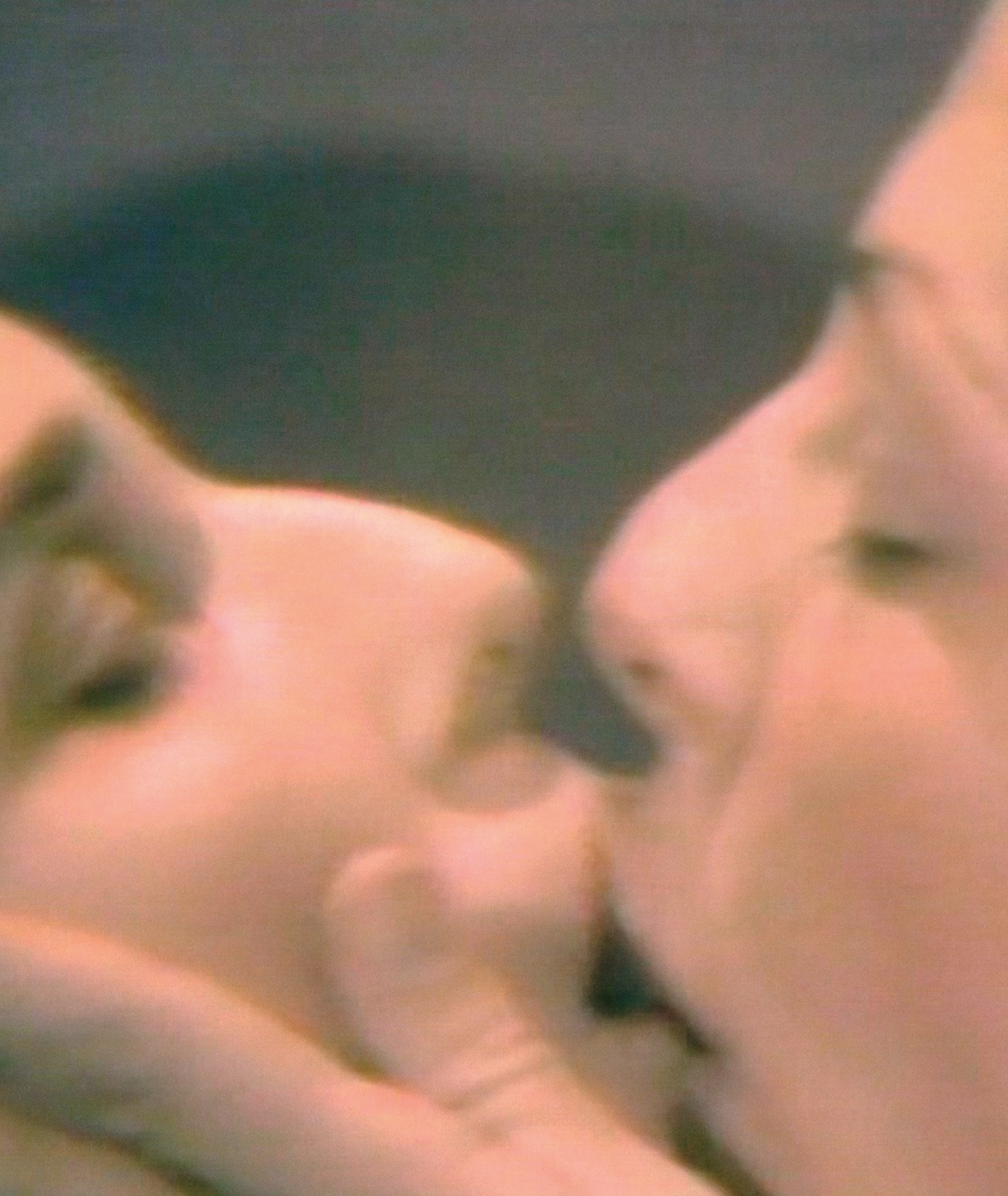
Lynda Benglis, FEMALE SENSIBILITY, 1973, Video tape loop, 14 minutes, Courtesy Cheim & Read, New York
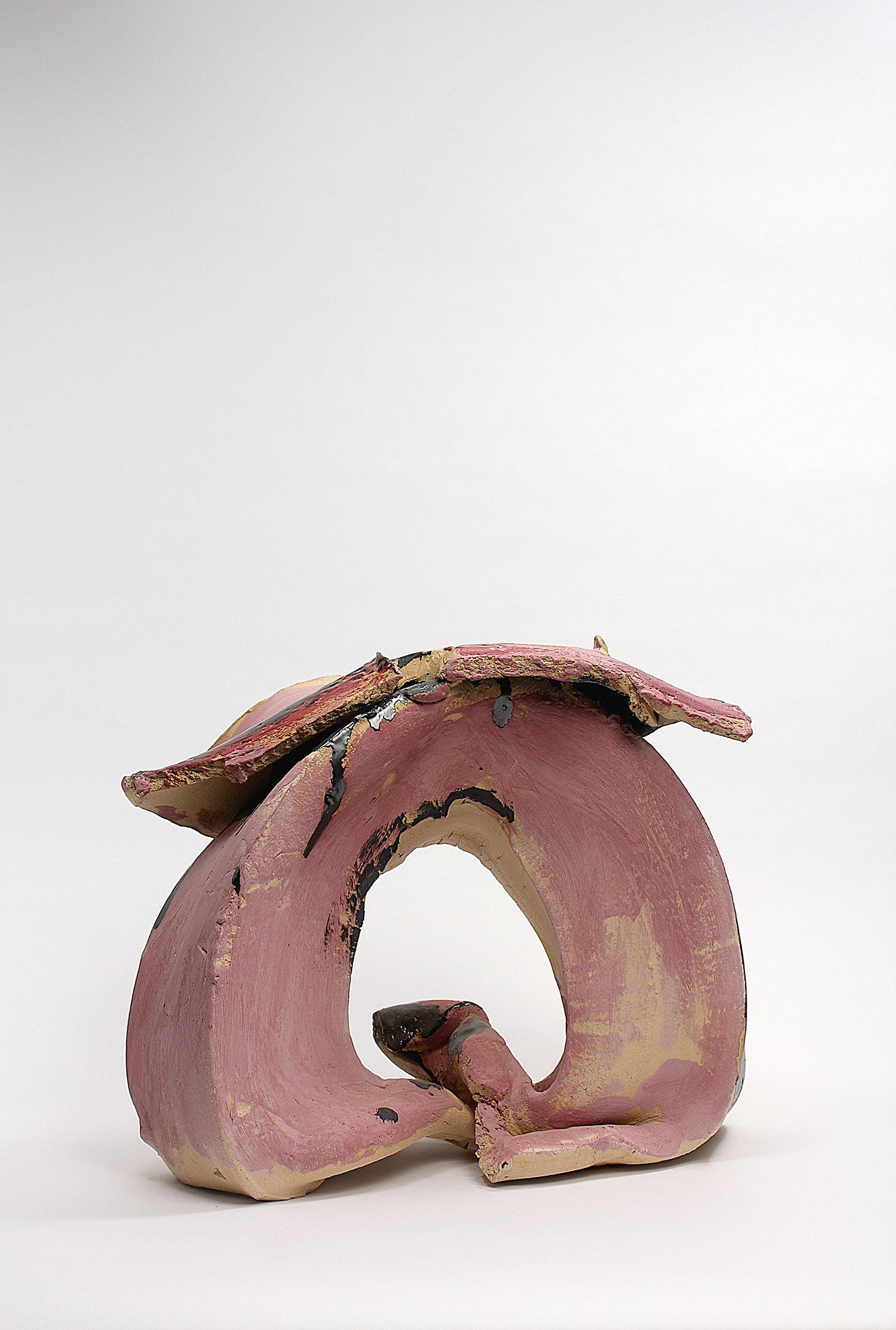
Lynda Benglis, ADIA 2013, Glazed ceramic, courtesy of Cheim & Read, New York






